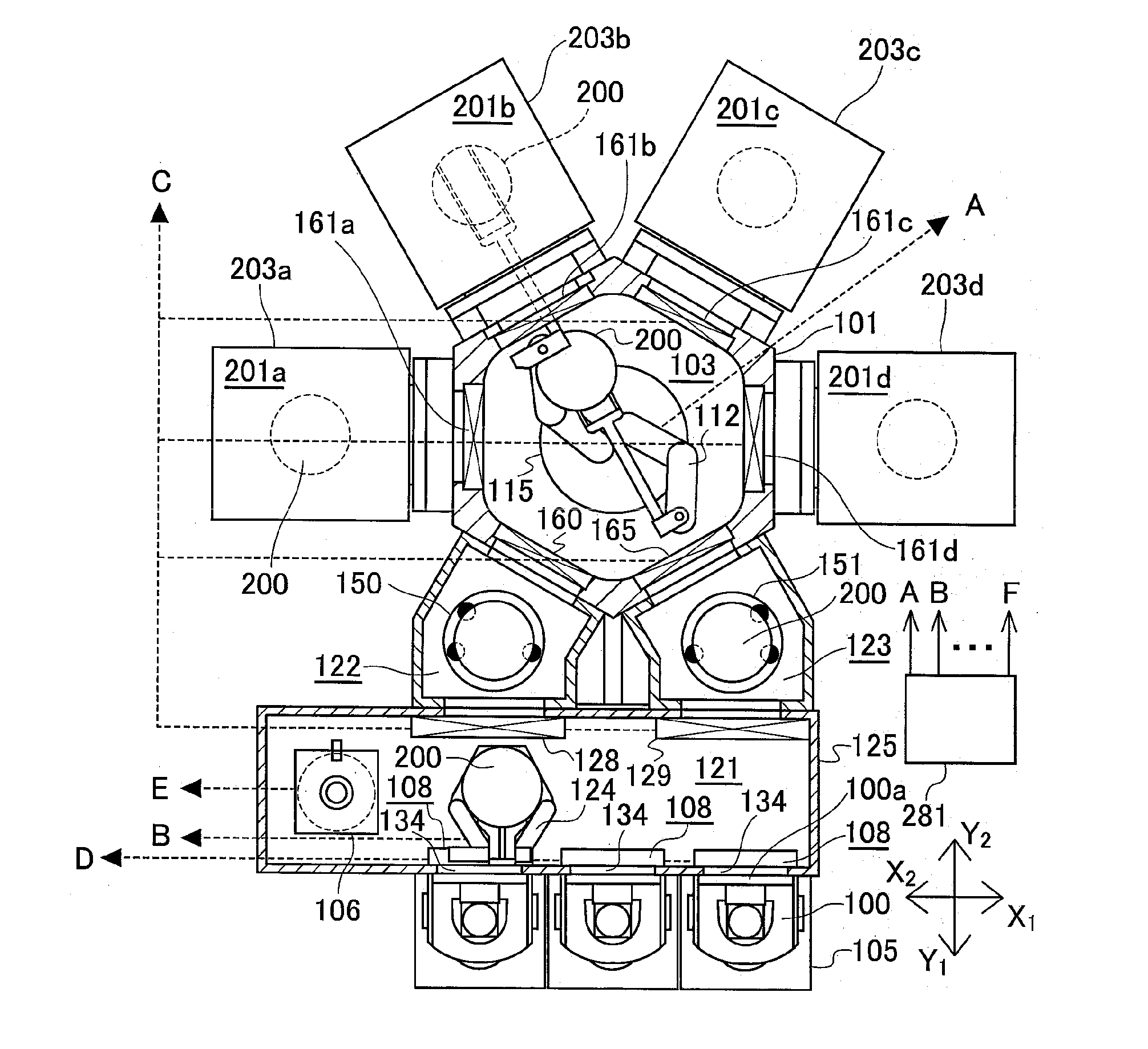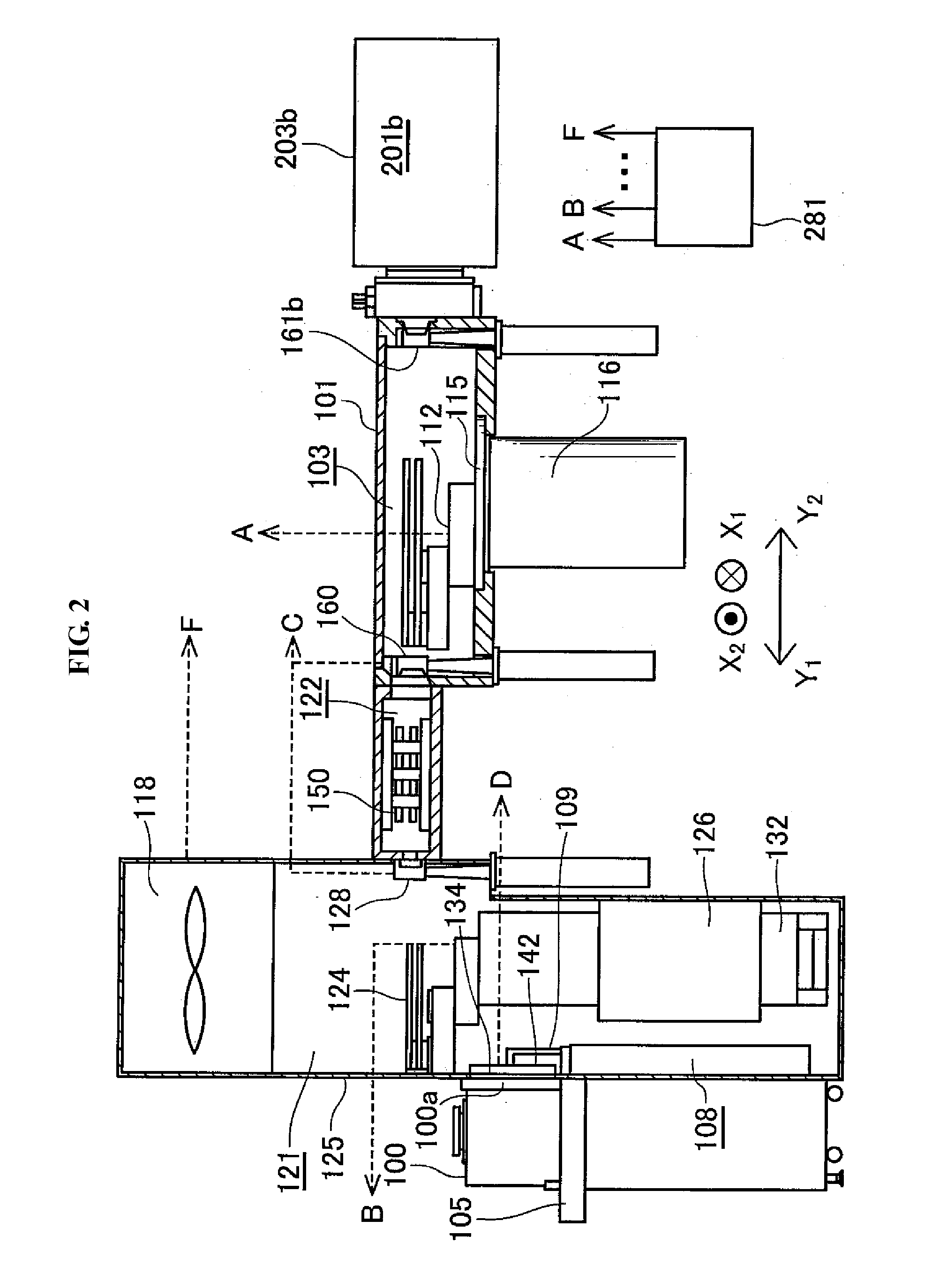Substrate processing apparatus and method of manufacturing semiconductor device
a processing apparatus and semiconductor technology, applied in the direction of lighting and heating apparatus, charging manipulation, furnaces, etc., can solve the problems of deteriorating reliability or lifespan of the transfer robot, parts constituting the transfer robot may be easily degraded, and heat may not be easily radiated, so as to improve the manufacturing throughput of the substrate processing apparatus and suppress the increase in temperature of the transfer robot
- Summary
- Abstract
- Description
- Claims
- Application Information
AI Technical Summary
Benefits of technology
Problems solved by technology
Method used
Image
Examples
first example
(1) First Example
[0147]An operation of carrying the substrate, which has been processed and heated at 700° C. in the process chamber having the same configuration as the process chambers 201a through 201d, into the preparatory chamber for unloading using one arm (an arm configured to transfer a processed substrate) of the vacuum transfer robot under an environment where a pressure in the vacuum transfer chamber was 100 Pa was performed 25 times using the same sequential order and techniques as in the above-described substrate processing process.
[0148]In this case, for a configuration of the first example in which the surface of the arm was electro-polished and the surface of the inner wall of the vacuum transfer chamber was treated with alumite, and a configuration of a conventional device, that is, a configuration of Comparative Example in which the surface of the arm was treated with alumite and the surface of the inner wall of the vacuum transfer chamber was exposed to aluminum s...
second example
(2) Second Example
[0150]For the second example having the same configuration as the first example, and this Comparative Example having the same configuration as said Comparative Example, a temperature of each part of the vacuum transfer robot when an operation number per hour was set to 25 and 37 was measured using the same sequential order and techniques as the first example. Like the above-described embodiment, the transferred substrate was heated at 700° C., and a pressure in the vacuum transfer chamber was set to 100 Pa. Therefore, it was realized that a mean temperature of each part of the vacuum transfer robot was dependent on the number of transfers per hour, as shown in FIG. 6.
[0151]In FIG. 6, a horizontal axis represents a number of operations per hour, or a number of substrates processed (sheet(s) / h), and a vertical axis represents a mean temperature (° C.) of each part of the vacuum transfer robot. In the drawings, the mean temperature of each part of the vacuum transfer ...
third example
(3) Third Example
[0153]Each part of the vacuum transfer robot when a number of operations per hour was changed to a maximum of 75 based on the same sequential order and technique as in the second example was measured for temperature. The transferred substrate was heated at 700° C., and a pressure in the vacuum transfer chamber was adjusted to 100 Pa. In this case, the surface of the arm was electro-polished in the third example, a configuration where a surface of the inner wall of the vacuum transfer chamber was exposed to aluminum solid was used as a first configuration, and a configuration where a surface of the inner wall of the vacuum transfer chamber was treated with alumite was used as a second configuration. This Comparative Example had the same configuration as said Comparative Example.
[0154]Therefore, in each configuration, it was realized that a temperature in a predetermined place where the vacuum transfer robot was provided was dependent on the number of substrates proce...
PUM
 Login to View More
Login to View More Abstract
Description
Claims
Application Information
 Login to View More
Login to View More - R&D
- Intellectual Property
- Life Sciences
- Materials
- Tech Scout
- Unparalleled Data Quality
- Higher Quality Content
- 60% Fewer Hallucinations
Browse by: Latest US Patents, China's latest patents, Technical Efficacy Thesaurus, Application Domain, Technology Topic, Popular Technical Reports.
© 2025 PatSnap. All rights reserved.Legal|Privacy policy|Modern Slavery Act Transparency Statement|Sitemap|About US| Contact US: help@patsnap.com



